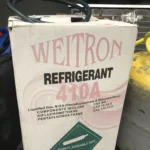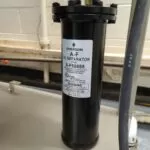Many modern home refrigerators with ice machines allow you to choose between cubed or crushed ice. If you want a nice drink of water that will stay cool for a long time, you fill your glass with ice cubes. You may choose to use crushed ice in tiki cocktails if you're feeling fancy (or mint juleps on Kentucky Derby day).
However, ice machines are also important in the commercial sphere. The types of ice machines you'll find in commercial kitchens and hotels are called package ice makers. These machines come mostly pre-installed from the factory, and they can typically make cubes or flakes of ice. Personal preference is not a factor that we consider for ice usage in the commercial sphere; each ice type has a distinct job.
We’ll cover how ice machines work and then describe the differences between cube and flake ice. We will also cover what we use each ice type for and why they are ideal for their respective uses.
Table of Contents
HOW ICE MACHINES WORK
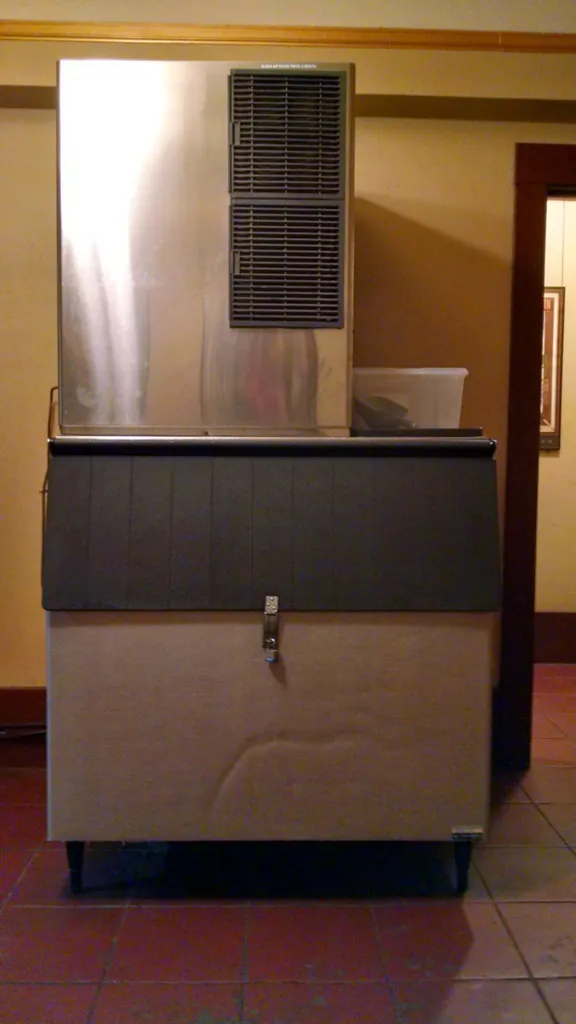
Like A/C units and refrigerators, ice machines operate on a refrigeration cycle. They move heat away from water to freeze it, and it rejects that heat elsewhere.
So, the most critical element of an ice machine is the evaporator, which absorbs heat from the space. Water fills that space, and then the evaporator removes heat from that water, effectively freezing it. That frozen water then collects in a storage bin, where the ice remains until it is ready for consumption or other uses.
ICE CUBES: THE BASICS
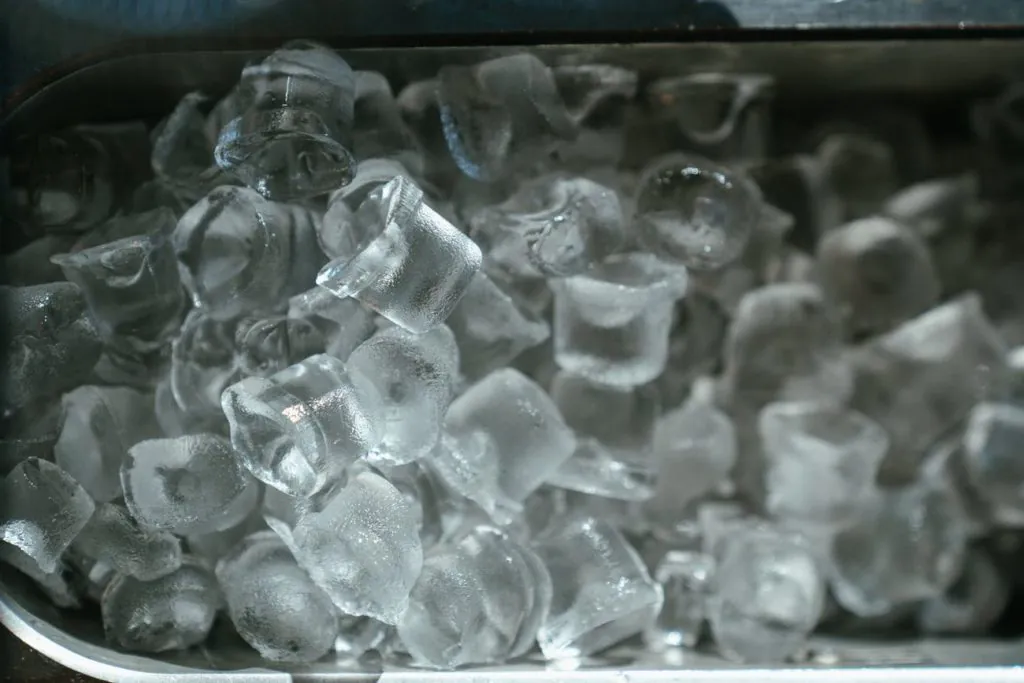
Cube ice machines freeze water in batches. Water fills a sump with a grid, and it freezes on the grid. Once the ice is ready to drop, the ice machine goes into a harvest cycle. The harvest cycle is a hot gas defrost, which sends hot gas from the compressor to the evaporator. Then, the ice releases itself as the evaporator warms. When the ice falls off, it accumulates in the storage bin until it is ready for use.
Cube ice's main use is for human consumption. You will find ice cubes in your drinks at restaurants and self-serve soft drink dispensers.
ICE FLAKES: THE BASICS

Instead of having a sump with a grid, flake ice forms in a long cylinder that fills with water. The cylinder’s walls absorb heat. As the water freezes, an auger rotates in the center of the cylinder, compressing ice flakes as they freeze and moving them towards the top of the cylinder. When the flakes reach the top, they get pushed through a chute and fall into the storage bin.
You can use flake ice for human consumption, but we typically use pure flaked ice for storage and display purposes. For example, buffets may keep cold food in bowls and bins that get wedged in flake ice. Another example of flake ice usage is the storage and display of fresh fish at the market.
When restaurants use flake ice for human consumption, you would typically see “nuggets” instead of flakes. Ice nuggets are compressed flakes that are round, soft, and easy to crush with your teeth. You can find these nuggets in some cocktails at restaurants (or Wawa specialty iced coffee).
QUALITY STANDARDS FOR ICE CUBES AND FLAKES
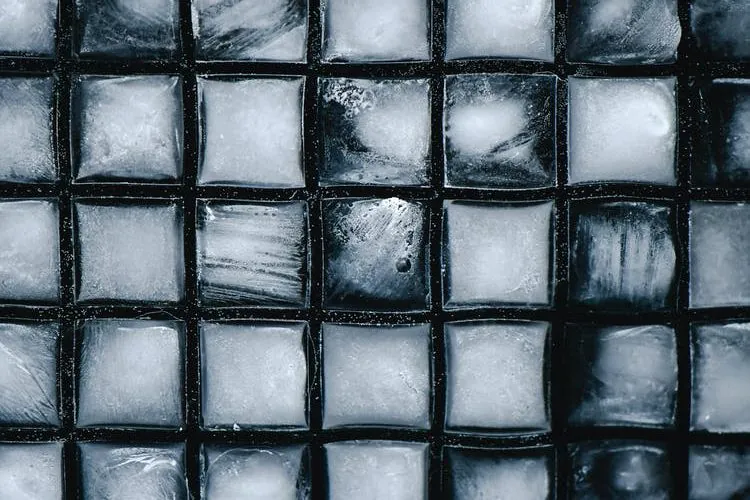
Even though ice cubes and flakes are just frozen water, they have different quality standards. While some of these quality standards certainly overlap, some features that are desirable for ice cubes are undesirable for ice flakes and vice versa.
Quality standards start with the water. In ice cubes and flakes, purer water is always more desirable. You can get a rough idea of the water's purity by examining an ice cube. Water that does not have any minerals or trapped air will freeze first. As the water freezes, mineral-laden water and air bubbles move towards the center of a cell on the grid until they eventually freeze. You will yield an ice cube that looks cloudy in the middle. Cloudy ice comes from hard water, which has a high mineral and air content, and it's less desirable than clear ice.
One area where cubed and flaked ice differ is their desired hardness. In ice, hardness refers to its ability to decrease the temperature of something. (Don't confuse ice hardness with water hardness. Harder water actually decreases ice hardness because the high mineral content reduces the ice's ability to remove heat from a beverage or product.)
Ice cubes are dense, and many ice machines that produce cubes wash out the minerals, making the cubes as hard as possible. Cubed ice should typically be in the 95-100% hardness range. On the other hand, flaked ice will naturally be softer because the machine cannot wash out the mineral content, and more air is present during the freezing process. Flaked ice will ideally have a hardness value of around 70%.
Regardless of which ice type your business utilizes, the best way to make sure you get the best possible ice is to keep your machines clean. When cleaning ice machines, a nickel-safe sanitizer works best, not harsh chemical cleaners. No matter if you're a restaurant owner serving Coca-Cola, a bar owner serving specialty cocktails, or a market manager who wants to keep their products fresh, proper ice machine cleaning and maintenance will give you the best-quality cube and flake ice.
References:
Silberstein, Eugene, et al. Refrigeration & Air Conditioning Technology. 9th ed., Cengage, 2021.
Wirz, Dick. Commercial Refrigeration for Air Conditioning Technicians. 3rd ed., Delmar, 2021.
These sources are some of the top training and educational materials that we recommend for our technicians. They are truly the guides of the HVAC and refrigeration industries.





